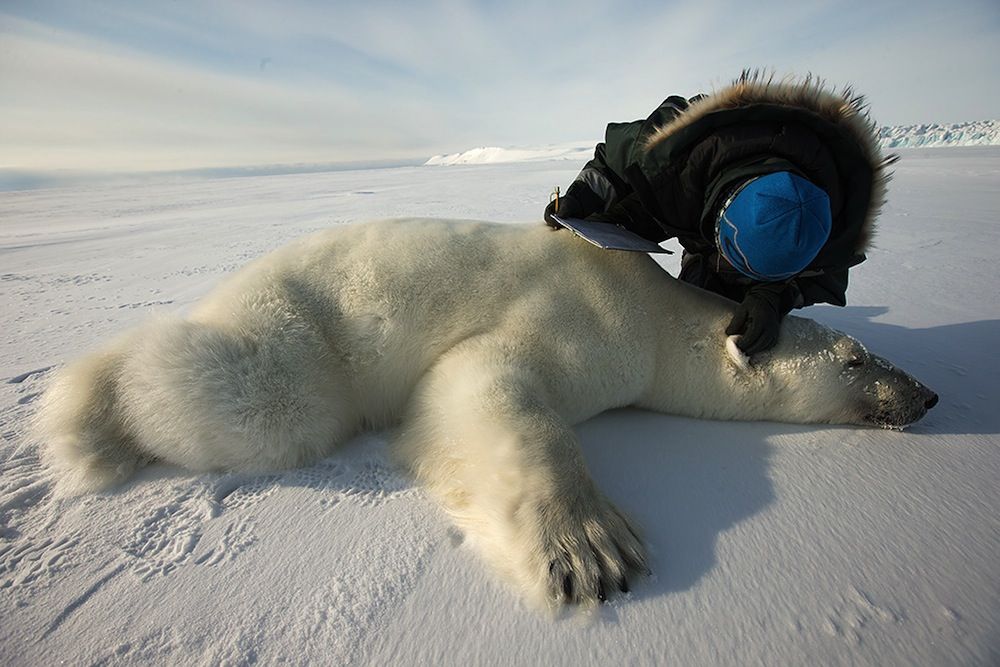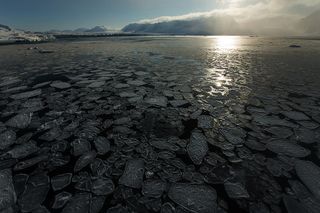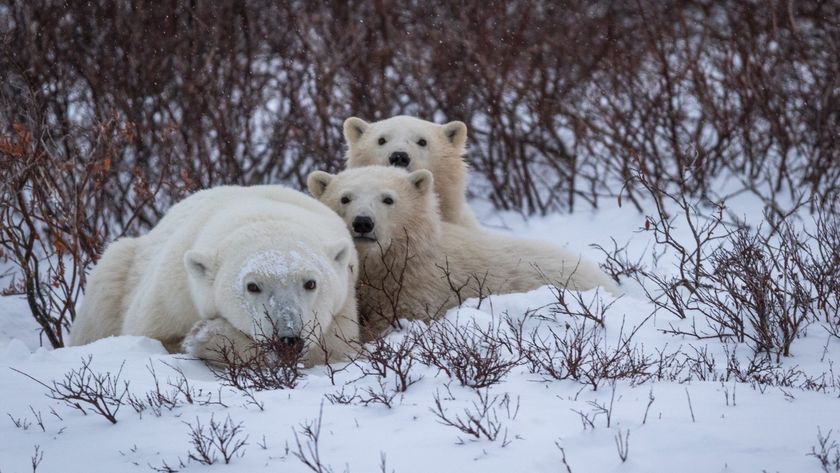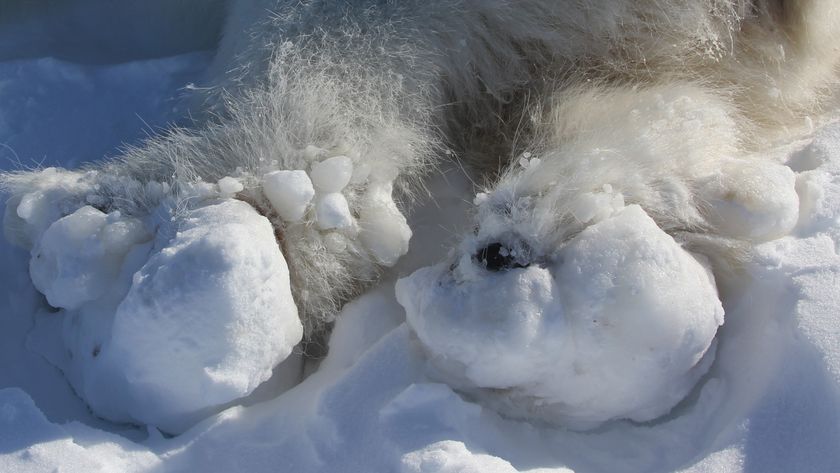Polar Bears on Thin Ice, Arctic Expedition Finds

An expedition to the islands of Svalbard, Norway, to study how rising temperatures and melting sea ice are affecting polar bears concluded Monday (April 21).
Over the 10-day trek, researchers outfitted female bears with satellite tracking collars that will send back data, giving researchers a picture of how shrinking sea ice may be affecting the polar bears' movements and denning patterns.
"The bear denning habitats appear to be shifting further north," Geoff York, one of the expedition leaders, told Live Science via satellite phone from the team's ship in Svalbard Thursday (April 17). The team had so far deployed 11 of their 20 collars, York said. [Gallery: Polar Bears Swimming in the Arctic Ocean]
The 2013-2014 winter has seen record-low levels of sea ice — which the bears rely on to hunt — around Svalbard, said York, who is a polar bear researcher at the World Wildlife Fund. "The question is how the bears will respond as there's less and less sea ice."

Researchers at the Norwegian Polar Institute have been monitoring the polar bears in Svalbard for years using tracking collars. This year, the WWF and camera maker Canon joined the effort, allowing the team to stay longer and put out more collars.
The satellite data suggest there are two groups of bears: Those on the northern end of the archipelago mostly keep to the open water and sea ice, rarely coming onshore. Other bears stay mainly onshore in summertime, hardly ever leaving the islands.
One thing the researchers don't know is exactly how many bears there are, York said. Researchers estimate there may be about 2,600, plus or minus a few hundred.
Sign up for the Live Science daily newsletter now
Get the world’s most fascinating discoveries delivered straight to your inbox.
Capturing a polar bear for tagging is no easy feat. A crew aboard a helicopter locates a bear and darts it with a sedative from the air. On the ground, the team measures the bear's length and weight, and takes blood and hair samples. The researchers only put collars on the adult females — the heads of male bears and cubs are smaller than their necks, so the collars don't stay on them.
"All of the movement data is from adult female bears," York said. "We have very little data on cubs and males."
The collars have sensors that record temperature, daylight, immersion in saltwater and depth. They tell researchers how much time the bears spend in the dens, and how often they go into the ocean to hunt.
The bears primarily eat ringed seal, but they also eat bearded seals, young walruses and sometimes even beluga whales or narwhal, though more often, they eat whale carcasses, York said. Polar bears have also been known to cannibalize other bears, and male bears have been documented committing infanticide for food.
Follow Tanya Lewis on Twitter and Google+. Follow us @livescience, Facebook & Google+. Original article on Live Science.













